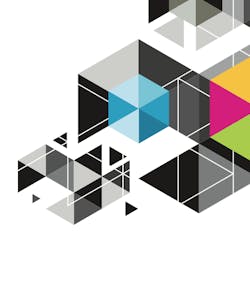The science and methodology behind the AADSM and AASM clinical guideline for oral appliance therapy
This article first appeared in the November-December issue of Apex360. Not a subscriber? We can help you with that: Just click here.
The Clinical Practice Guideline for the Treatment of Obstructive Sleep Apnea and Snoring with Oral Appliance Therapy released jointly this summer by the American Academy of Dental Sleep Medicine (AADSM) and the American Academy of Sleep Medicine (AASM) imparts tried-and-true best practices to the burgeoning field of dental sleep medicine. But more importantly, the guideline is built on a depth of research that was previously unavailable.
The 2015 guideline makes recommendations for optimal patient outcomes based on 51 randomized clinical trials (RCTs). This is a stark contrast to the initial oral appliance therapy position statement issued by the AASM in 1995, which was based on case studies. Even the 2006 update, a "Practice Parameters" document, was developed by the AASM using just 10 level 1 case studies.
READ MORE |AADSM and AASM clinical guideline defines best practices in treating obstructive sleep apnea
Scientific research involving oral appliance therapy has flourished considerably in the last decade, particularly those studies related to clinical outcomes. This expansive body of research provides a solid foundation for today's guideline, which describes the appropriate use of oral appliance therapy for treating both primary snoring and obstructive sleep apnea. Noteworthy within the research review is evidence suggesting that oral appliances can impact both quality of life and cardiovascular outcomes. Recent research also suggests that, when treatment adherence is taken into effect, oral appliances may be as effective as continuous positive airway pressure (CPAP) therapy.
Methodology for meaningful recommendations
To develop the new guidelines, the AASM and AADSM commissioned a task force of seven members, including sleep medicine physicians, dentists with expertise in the use of oral appliances, and researchers experienced in guideline development.
As a first step, the task force developed a series of 11 PICO questions to use as a guiding tool for an in-depth literature review. The PICO format, which stands for Patient/Population/Problem, Intervention, Comparison, Outcomes, is an established framework for guiding literature searches and developing evidence-based clinical practice recommendations. The questions created by the task force were formulated to find studies that address common outcome-related factors and issues raised in the previous two papers. They included questions such as, "In adult patients with sleep apnea, do oral appliances improve quality-of-life measures, and/or objective and subjective daytime sleepiness, as compared to other therapies or no treatment?" and "In adult patients with sleep apnea, does follow-up with dentists/sleep specialists improve adherence and reduce side effects associated with oral appliances compared to those who do not have follow-up?"
READ MORE |Obstructive sleep apnea: An opportunity for the dental profession
The experienced researchers on the team then performed an extensive review of the scientific literature to retrieve RCTs that addressed at least one of the 11 PICO questions. Many factors can make it difficult for researchers to make an apples-to-apples comparison between multiple studies-from a bias in selection or observations to the external validity-generalizability (i.e., whether the results of a study can be generalized to other populations). RCTs provide a higher quality of evidence than observational, nonrandomized or before-and-after interventional studies. Limiting the pool of potential research to RCTs allowed the task force to confidently compare results across studies, generate a mean difference, and measure the standard deviation of an outcome. RCTs were used in nine of 11 PICO questions to make recommendations, with two of the questions relying on prospective observational studies due to a lack of available RCTs. Ultimately, 51 articles were identified for data extraction, meta-analysis, and grading during the extensive literature review.
Putting the research into perspective
Before looking at the six clinical recommendations that resulted from the data analysis and grading, it's important to understand that these recommendations represent the best practices of those who already possess skill and experience in treating obstructive sleep apnea-namely board-certified or board-eligible sleep medicine physicians and qualified dentists.
Each of the 51 studies included in the analysis was conducted by dentists with considerable experience in dental sleep medicine. The successful delivery of oral appliances requires dentists to have technical skill, acquired knowledge, and judgment regarding outcomes and risks of the therapy. Because educational training in dental sleep medicine during dental school is uncommon, not all dentists can claim de facto competence in oral appliance therapy.
The guideline recommends that oral appliance therapy be delivered by qualified dentists-defined as those who have a valid state dentistry license, proof of liability coverage, and at least one of the following:
- A minimum of 25 hours of recognized CE in dental sleep medicine provided by a dental-sleep-medicine-focused nonprofit organization or accredited dental school in the last two years
- Certification in dental sleep medicine by a nonprofit organization
- Designation as the dental director of a dental sleep medicine facility accredited by a nonprofit organization
While not an all-inclusive definition, this term provides a baseline for which dental practitioners can strive and which physicians can reference when using the guideline to provide the best possible care for patients.
The recommendations, dissected
Ultimately, the task force developed six recommendations for effective treatment of snoring and obstructive sleep apnea using oral appliance therapy, each of which has been assigned a level of strength based on the evidence available and potential risks identified. Below is a look at noteworthy insights behind each recommendation:
1. We recommend that sleep physicians prescribe oral appliances, rather than no therapy, for adult patients who request treatment of primary snoring (without obstructive sleep apnea). (STANDARD)
The quality of evidence supporting this recommendation is high. Efficacy in primary snoring was addressed in the 2006 AASM Practice Parameters paper, and since then more studies have been conducted that support this recommendation. Noting that there was insufficient evidence to prove that treating primary snoring with oral appliances improves other health-related outcomes, the task force recommended oral appliances for patients with primary snoring who fail conservative treatment measures (e.g., weight loss, positional therapy, avoiding alcohol). It's important to note that, like all medical diagnoses, the diagnosis of primary snoring must be made by a physician, and not a dentist. Snoring is a cardinal symptom of obstructive sleep apnea, and misdiagnosis can have serious implications for the patient.
2. When oral appliance therapy is prescribed by a sleep physician for an adult patient with obstructive sleep apnea, we suggest that a qualified dentist use a custom, titratable appliance over noncustom oral devices. (GUIDELINE)
This recommendation addresses several points regarding the type of appliance used by the dentist. First, the task force analyzed the benefits of custom versus noncustom appliances and found that a custom-fabricated oral appliance was more effective than "boil and bite" devices. The task force then systematically reviewed the research for outcomes tied to titratable and nontitratable oral appliance designs. A meta-analysis of the research showed that reduction of sleep-disordered breathing severity was similar for both (1) custom, titratable and (2) custom, nontitratable appliances. However, there was slightly more evidence supporting the ability of custom, titratable devices to reduce sleep apnea severity, arousal index, and oxygen desaturation index while improving oxygen saturation. The evidence for this recommendation, graded low by the task force, also suggests that oral appliances can effectively improve quality-of-life measures and daytime sleepiness, with a moderate mean change in the Epworth Sleepiness Scale (ESS).
3. We recommend that sleep physicians consider prescription of oral appliances, rather than no treatment, for adult patients with obstructive sleep apnea who are intolerant of CPAP therapy or prefer alternate therapy. (STANDARD)
The task force identified 34 RCTs involving more than 1,300 patients that assessed the effect of oral appliances on treating sleep apnea, with 25 of the studies reporting greater than 50% reduction in sleep apnea severity. Therefore, the task force concluded that breathing improves with oral appliance use. The quality of evidence supporting this recommendation is moderate. Oral appliances were also found to be effective in improving sleep parameters, and data suggest that they may be effective at lowering blood pressure in select patient populations-with little likelihood of harm from the treatment. While the task force did not find an RCT that assessed objective adherence rates for oral appliances compared to CPAP, subjective reporting suggests that adherence rates are greater for oral appliance therapy. Overall, the literature review showed that CPAP was more efficacious than oral appliance therapy in treating sleep apnea, which means that CPAP generally is still considered to be the first-line option for treating sleep apnea. However, patient preference for oral appliance therapy should be considered by the treating sleep physician before therapy is prescribed.
4. We suggest that qualified dentists provide oversight-rather than no follow-up-of oral appliance therapy in adult patients with obstructive sleep apnea, to survey for dental-related side effects or occlusal changes and reduce their incidence. (GUIDELINE)
This recommendation was driven by the insight that the benefits of oral appliance therapy can be diluted by treatment-related side effects. While literature on the subject of dentists intervening to treat side effects was minimal-leading to a "low" quality-of-evidence grade- several studies highlighted how knowledgeable dentists had minimized side effects through follow-up visits, which improved patient adherence and, by default, patient outcomes with oral appliance therapy. Given the wide array of oral appliance designs and material options, the task force noted that dentists with experience or education in dental sleep medicine will be best qualified to choose the right appliance, make the necessary modifications to accommodate individual patient needs, and deal with any side effects that may arise.
5. We suggest that sleep physicians conduct follow-up sleep testing to improve or confirm treatment efficacy, rather than conduct follow-up without sleep testing, for patients fitted with oral appliances. (GUIDELINE)
The quality of support for this recommendation is low due to lack of evidence. However, it is interesting to note that the discussion sections in many of the reviewed research studies report significant improvement in the effectiveness of oral appliances when changes were suggested and made due to a follow-up sleep study. There was not enough evidence on this topic for a meta-analysis, but the literature review suggests that objective patient data are needed to confirm that the patient is being treated optimally by the oral appliance. The task force also recommended follow-up testing for patients who develop recurring symptoms, have a significant weight change, or are diagnosed with comorbidities related to sleep apnea.
6. We suggest that sleep physicians and qualified dentists instruct adult patients treated with oral appliances for obstructive sleep apnea to return for periodic office visits-as opposed to no follow-up-with a qualified dentist and a sleep physician. (GUIDELINE)
In line with recommendations 4 and 5, periodic check-ups between patients and the treatment team were shown in the research to help achieve optimal treatment outcomes and greater long-term improvement in sleep apnea sufferers. The quality of evidence supporting this recommendation is low.
For an in-depth analysis of oral appliance therapy research, the full text of the Clinical Practice Guideline for the Treatment of Obstructive Sleep Apnea and Snoring with Oral Appliance Therapy: An Update for 2015 can be found at aadsm.org/oatguideline.aspx.
Leslie Dort, DDS, is a Calgary dentist whose practice is limited to treating sleep-disordered breathing and TMJ issues. She is affiliated with the University of Calgary and is involved in research related to oral appliance therapy and the development of best practice guidelines in dental sleep medicine. Dr. Dort is currently editor of the Journal of Dental Sleep Medicine and a member of the AASM/AADSM Task Force on Oral Appliances.

